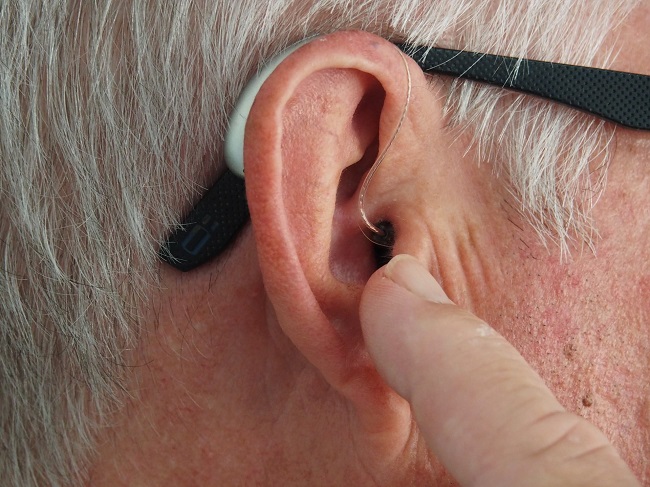The WHO estimates that there are 360 million people in the world who have hearing problems or are deaf (5.3% of the world’s population). At least half of all hearing loss cases can be prevented, including good ear care practices. Being in control of your health is vital. Hearing loss can impair your quality of life, limit your ability to make contact with others, cause misunderstandings and fatigue, increase stress and “filter” the thousands of sounds that give pleasure and meaning to life. Also, hearing loss can create a safety issue or even depression. But perhaps the biggest problem is how we view hearing loss both as a culture and as individuals. Hearing loss has always been something of a stigma compared to vision problems. For example as a society, we prioritize our hair loss over our hearing loss and whilst all issues are important to us one way or another, it’s important to be on top of your hearing health and act quickly.

Image Credit
There are many types of hearing loss and these may be caused by a number of reasons. The most common causes of hearing loss are:
1. The constant exposure to noise at work
Prolonged exposure to constant and loud noise can cause permanent hearing loss. Items such as motorcycles and power tools can also damage your hearing over time. If you can, avoid noisy activities or take a break.
2. Injuries or changes in pressure
A serious head injury can dislocate part of the ear or cause nerve damage, causing permanent hearing loss. Sudden changes in pressure – such as flying or diving – can damage the eardrum and the inside of the ear.
3. Medication
Some drugs are known to cause hearing loss as a side effect. These drugs include certain antibiotics and anti-cancer drugs. Regular use of aspirin can also increase the risk of hearing loss, but usually the side effects subside with discontinuation of the medication.
4. Chronic diseases
Some chronic diseases that are not directly related to hearing can cause its loss. For example, it may be a damage due to the interruption of blood flow to the inside of the ear or to the brain. Heart disease, stroke, high blood pressure, and diabetes are some of the causes of hearing loss, as well as autoimmune diseases such as rheumatoid arthritis.
5. Childhood diseases
Many childhood diseases can cause hearing loss. Infections, for example, fill the ears with fluid and cause hearing loss that usually goes away when the infection heals. There are also diseases known to affect hearing in children, including chickenpox, encephalitis, influenza, measles, meningitis and mumps.
Looking to the future
If you have been diagnosed with hearing loss, then life can change dramatically and you may need to look at new ways around things. With hearing loss recovery, you can certainly get more in control. It is also important to be positive and ensure that you follow some of the most important tips to keep your ears safe. These may include:
- The production of “wax” in our ear serves its defense against infections and other harmful factors (eg insect entry). Normally, with the chewing movements, the “candle” is pushed and comes out to the external auditory canal.
- Our ears have the function of “self-determination” from the cell (“wax”) produced in the skin of the external auditory canal.
- Cotton swabs or anything similar used to clean the ear are not medically permitted. Their introduction into the external auditory canal can lead to accumulation of “wax” but also to various accidents (skin injury and otitis, cotton retention in the pore, drum perforation, etc.).
- Never put anything in the ear (such as a finger or a cotton swab).
- Use the hair dryer on the lower scale to completely dry your ears.
- Do not attempt to remove a cell yourself. The intervention of the otolaryngologist is necessary in cases where there is sufficient accumulation of alveoli.
Check your hearing often and be in control. Unlike most medical examinations, the tests that measure hearing are relatively quick and painless. An otolaryngologist will probably perform 3 or 4 simple tests that may include:
- Otoscopy, or examination of the ears with a special lens
- Audiogram, a sound control that produces a mapping or graph of hearing ability
- Tympanogram, which measures the pressure of the inner ear and evaluates the mobility of the eardrum.
These tests are performed at the doctor’s office and usually take less than an hour to complete. With the information from these tests, your doctor will be able to make an accurate assessment of your hearing skills and advise you on all of the options for treating it. Be sure to take control today.
